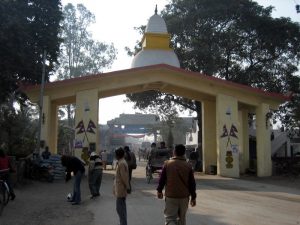India’s Foreign Secretary Harsh Vardhan Shringla will visit Nepal on November 26 and 27, a statement from the Ministry of External Affairs (MEA) has noted. This is his first trip to the Himalayan country since assuming office in January this year. The agenda for Shringla’s trip is vague, with the MEA statement simply noting that it “is in keeping with the tradition of regular high-level exchanges between the two countries and the priority India attaches to its relations with Nepal.” His Nepal visit comes amid New Delhi’s hectic outreach to Kathmandu by way of an attempt to arrest a serious downturn in India-Nepal relations, including a festering border dispute and Indian concerns about China’s growing heft in Nepal’s domestic politics.
According to a statement about the visit from Nepal’s Foreign Ministry, on November 26 Shringla “is scheduled to call on the high level dignitaries of Nepal. He will also hand over Covid-19 related support to the Government of Nepal.”
Earlier this month, the Indian Army chief General Manoj Mukund Naravane had also visited Kathmandu, meeting with Nepal’s political and military leadership. Naravane had angered the Nepalese establishment in May with his suggestion at a think tank event that Nepal’s protests about India’s inauguration of a new road — that would connect the state of Uttarakhand to the China-India-Nepal trijunction in the Lipulekh pass — were at the behest of China. Nepal claims the new road passes through its territory.
Last month, on October 4, Samant Goel, head of the Research and Analysis Wing – India’s principal external intelligence service – also made a trip to Nepal, during which he met with Nepal’s Prime Minister K.P. Sharma Oli as well as opposition leader Sher Bahadur Deuba and former Prime Minister Baburam Bhattarai. Goel’s very public visit had piqued the curiosity of Indian analysts, given that it was the Indian spy chief and not an official from the foreign ministry who landed in Kathmandu, effectively as Indian Prime Minister Narendra Modi’s emissary.
In June, Nepal approved a new political map that showed Lipulekh, Kalapani, and Limpiyadhura, areas India has traditionally considered its own, as part of Nepal. On its part, Kathmandu had protested a new political map of India issued last November, following the reorganization of the erstwhile state of Jammu and Kashmir into two centrally controlled territories, that showed Kalapani as part of India. At that time, Nepal’s Foreign Ministry had unequivocally stated: “The Nepal government firmly believes that the Kalapani is a part of Nepal,” going on to add “The remaining issues related to the border should be resolved in bilateral consensus and any unilateral actions will be unacceptable to the Nepal government.”
While the border dispute around Kalapani between India and Nepal dates back to the 1950s, both sides have discussed it officially since the 1990s. India and Nepal also have a Border Working Group (BWG) mechanism since 2014, which is mandated with addressing border infrastructure maintenance issues. In August, Kathmandu had called for a meeting of the BWG that month or the one after; however, the BWG is not empowered to deal with border disputes. In any case, the BWG meeting did not take place.
The Oli government has insisted on a high-level meeting to address border-related questions, even though it is not known whether those issues will indeed figure on Shringla’s agenda during his visit. According to the Hindu, Indian government sources have noted the Indian foreign secretary’s Nepal trip as a “courtesy visit” and suggested that it “was not meant to formally discuss the contentious border issue.”
Instead, the focus of Shringla’s visit might very well be on relatively lower-hanging fruits such as infrastructure development and connectivity projects. As the MEA statement announcing his trip notes, “in recent years, bilateral cooperation has strengthened, with several major infrastructure and cross-border connectivity projects completed with India’s assistance.” The India-Nepal joint working group on railway cooperation held a virtual meeting on November 20 to review the status of cross-border railway projects.

































